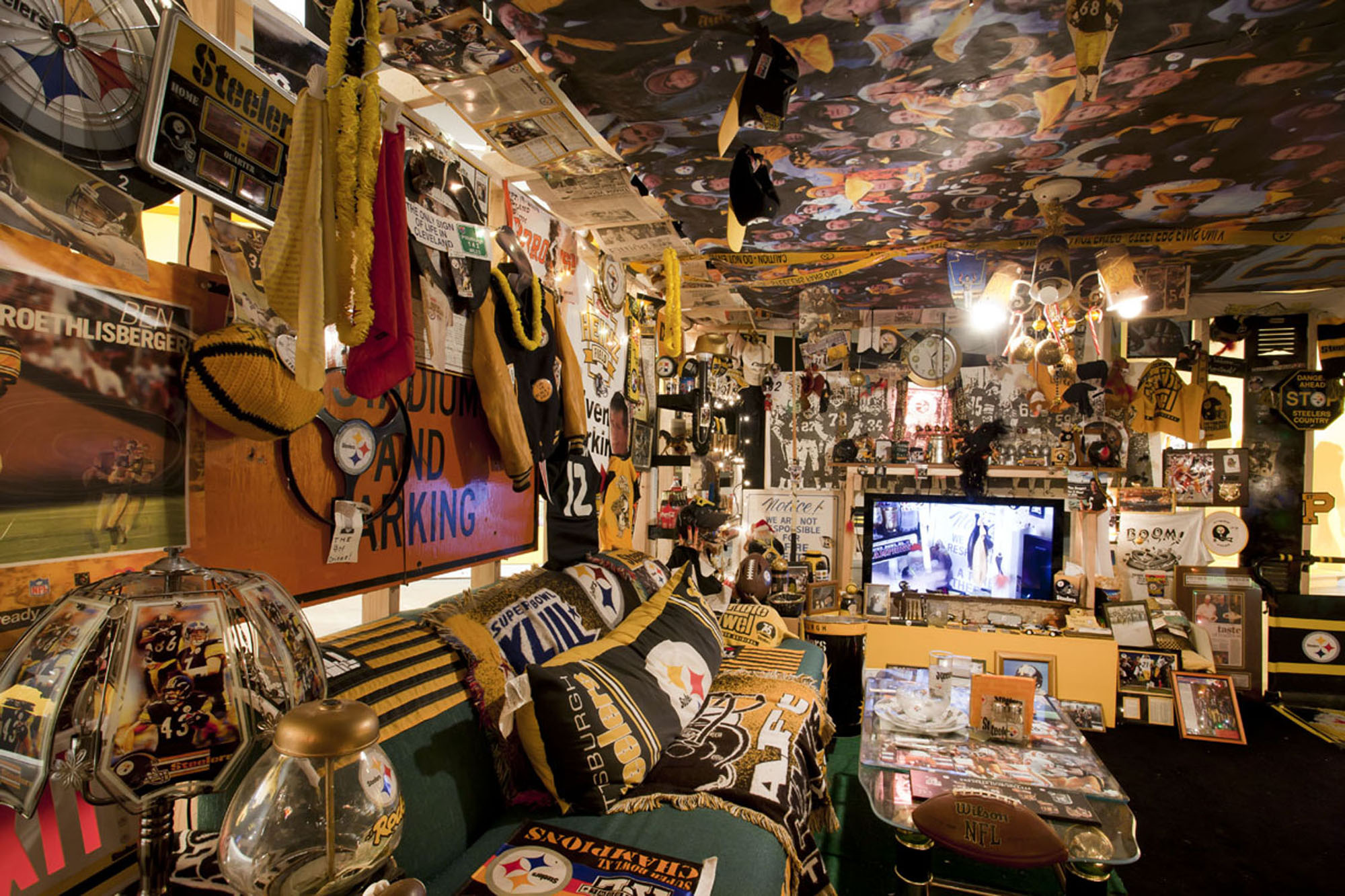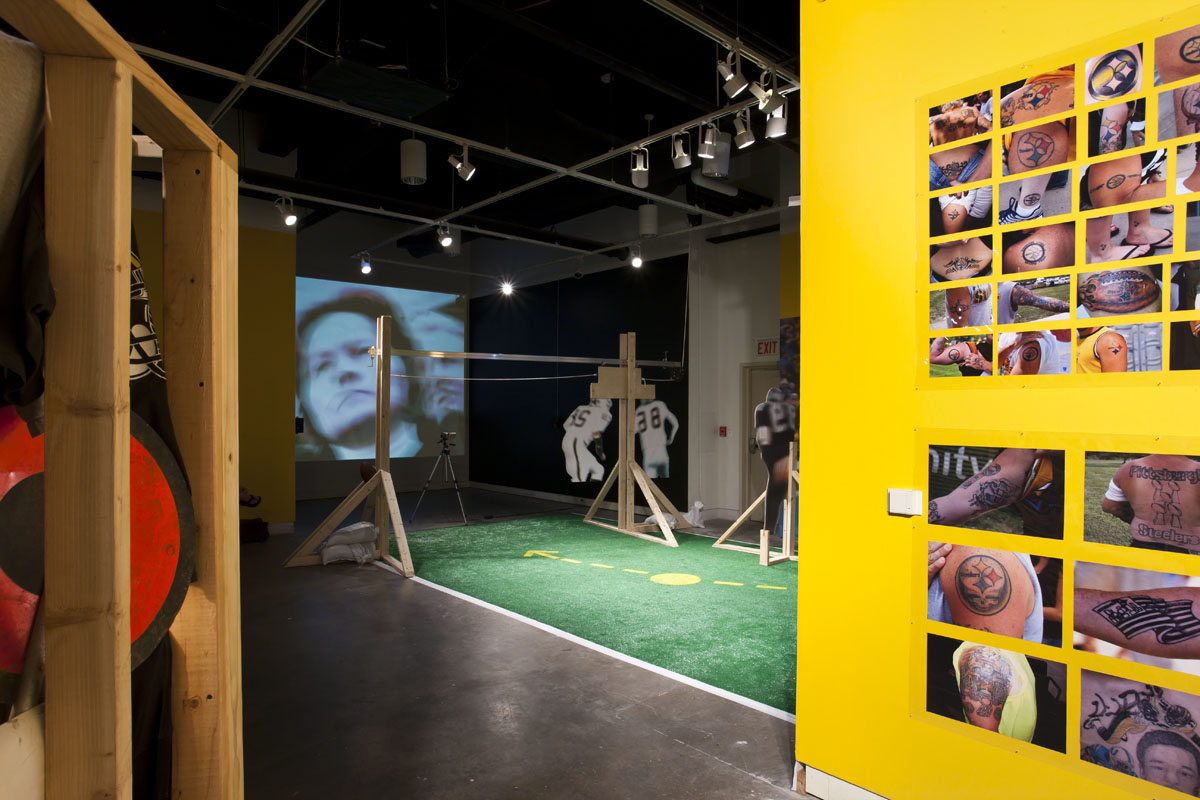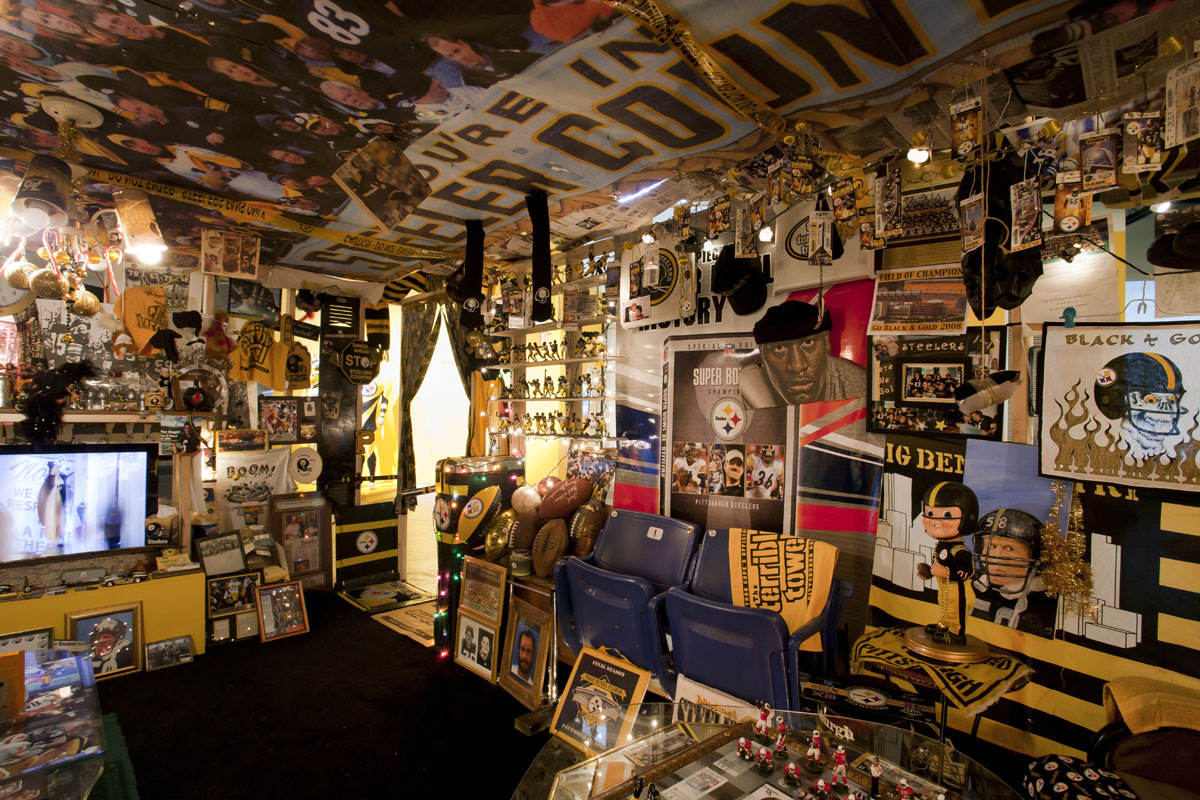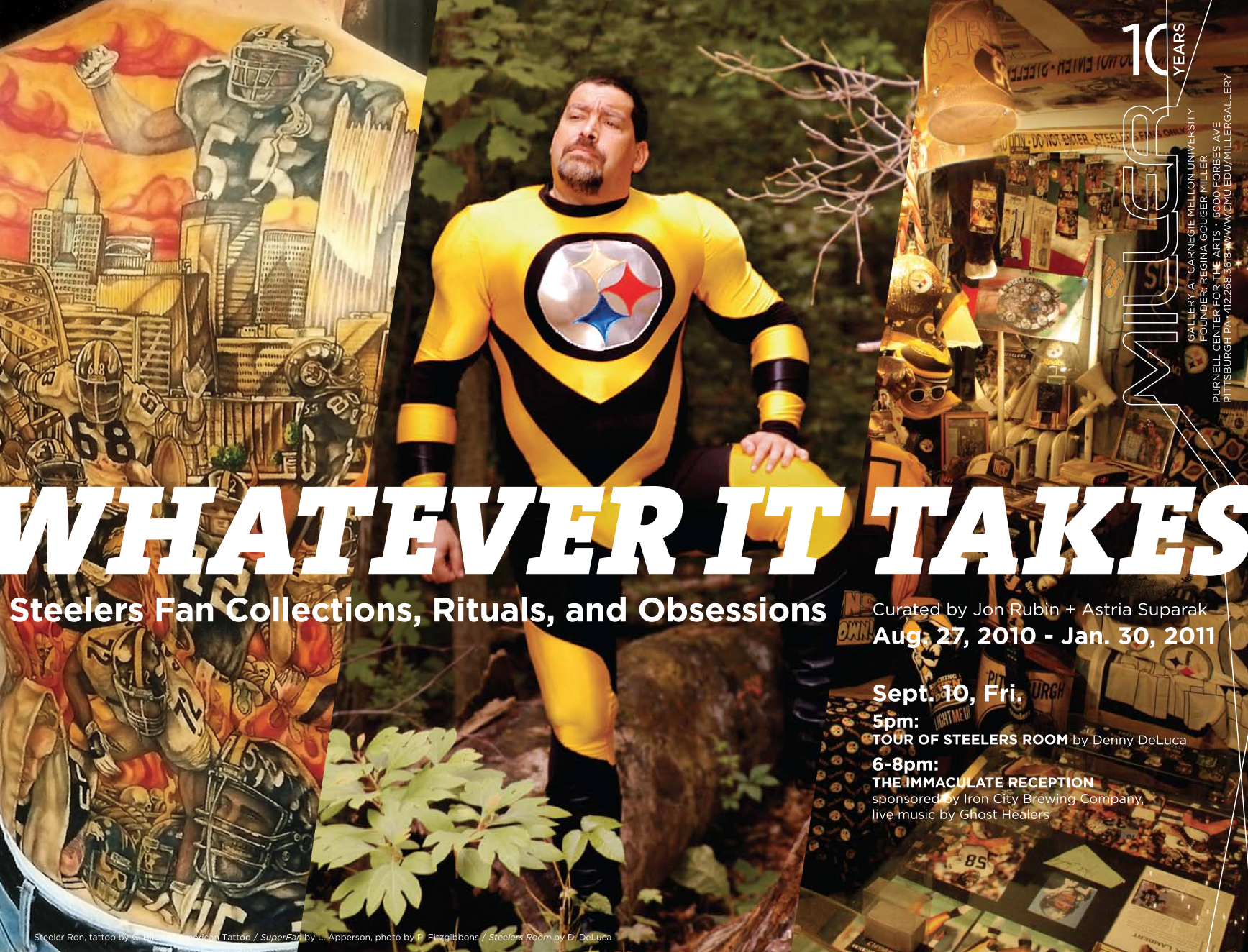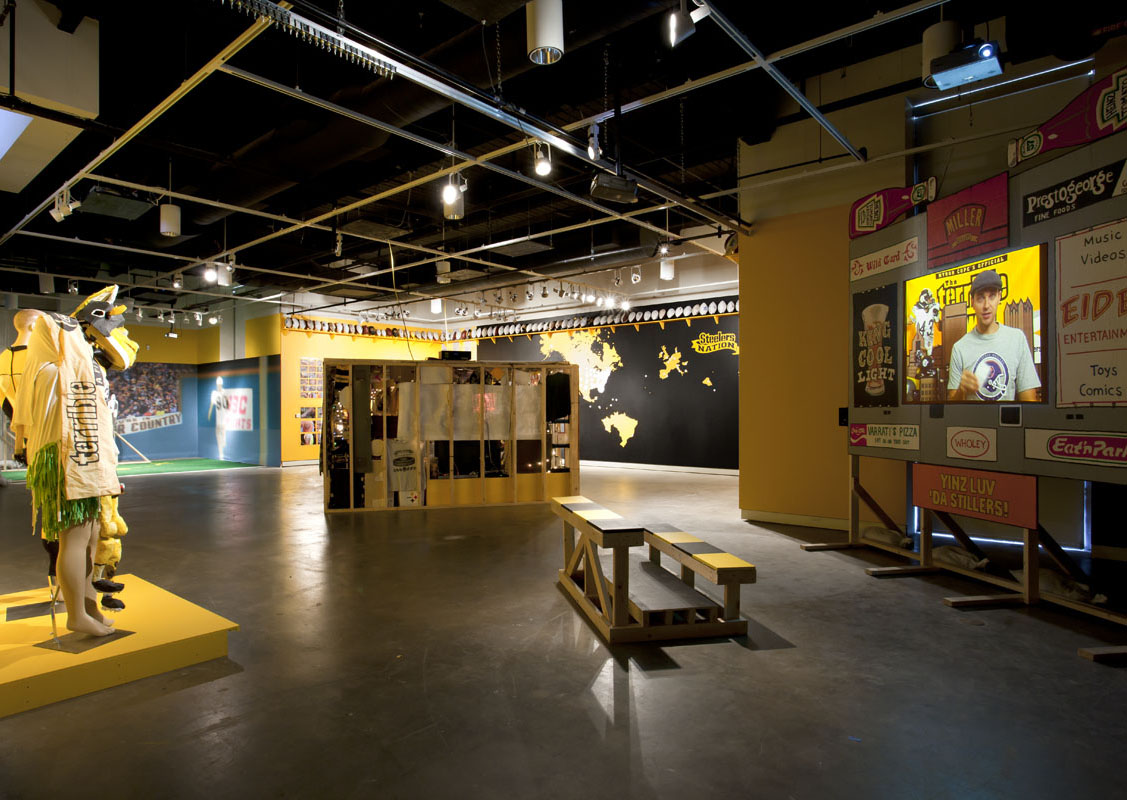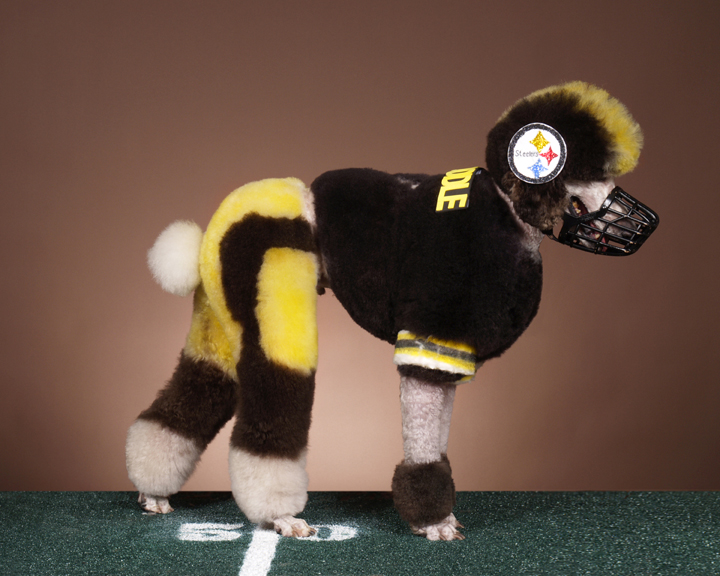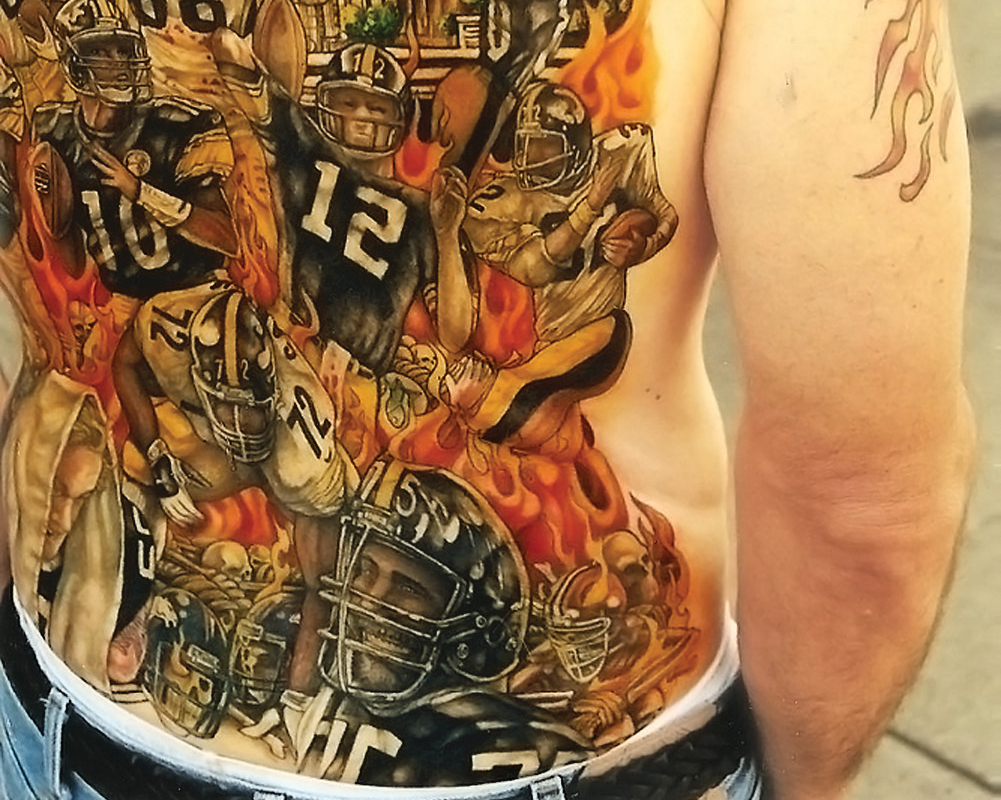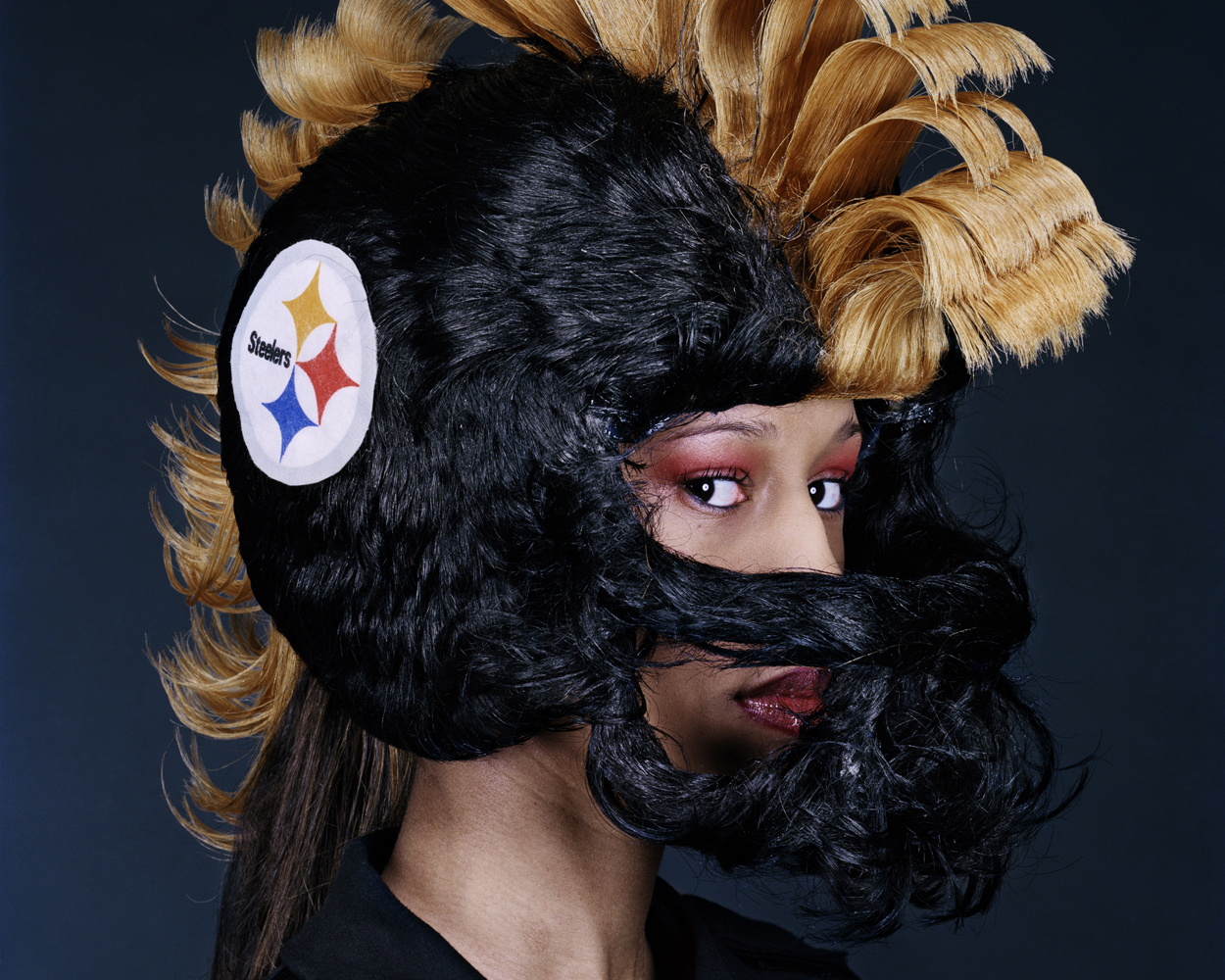WHATEVER IT TAKES
Miller Institute for Contemporary Art, Carnegie Mellon University, 2010
>> PROJECT WEBSITE <<
Curatorial project with Astria Suparak
(Below from curatorial statement)
If space aliens landed in Pittsburgh, what would they determine was the dominant culture that unified the populace? It could only be Steelers culture.
Steelers culture is Pittsburgh's popular culture, and the fans are its primary producers. Often overlooked in discussions of pop culture, much less "high" culture, sports fans are portrayed as uncritical, and passive consumers blindly following a branded product. Whatever It Takes: Steelers Fan Collections, Rituals, and Obsessions looks at the particular and ingenious methods Steelers fans use to construct their own personal and social identities in relation to the team, and in the process, create an active community of cultural producers. Through countless fan sites, gameday rituals, costumes, tattoos, videos, unlicensed merchandise, and more, Steelers fans brilliantly remix and meld the team's identity with their own. Take Jim Shearer's weekly, low-budget Web-show, Yinz Luv 'Da Stillers, whose new season of episodes will be screened in the gallery. Shearer produces the entire show from his bedroom using homemade props and a remarkably clever remix of footage from the week's game, popular movies, homemade puppets, hand-painted cutouts, and his own engaging persona. His show takes the basic conventions of a major network post-game telecast and reinvents it as a platform for his idiosyncratic creativity and earnest fandom. This do-it-yourself ethos of many Steelers fans reflects larger pop cultural trends in which enthusiasts of TV shows, bands, and movies build fan communities that create their own narratives and aesthetics out of the objects of their passion.
Of course not all Steelers fans produce a weekly Web show, many simply relate to the team by quietly performing gameday rituals in the privacy of home. Most are fairly common, but there is a more intricate and obsessive form of ritual, such as setting aside 62 minutes to kiss every Steelers item in the house prior to kick-off; following the offense on one TV set and the defense on another; watching the game alone with a painted face; wearing a Terrible Towel throughout the day, even in the shower; defeating that day's opponent on PlayStation football right before the game; or reciting a customized Lord's Prayer that cites the Steelers' owner and the opposing team to be vanquished. And most of these examples are from Steelers fans living outside of Pennsylvania. The Steeler Nation is vast, existing in every American state and at least 27 countries, including over 2,000 self-proclaimed Steelers bars and fan clubs worldwide.
What could cause such intense obsession and devotion? In the 1970s, the fall of the steel industry coincided with the rise of the Steelers football team, generating a perfect storm for the development of a die-hard Steelers fan base. The team mirrored the values and desires of its working class fans: they were owned by a self-made local family, named after the local industry, and had a relentlessly hard-nosed playing style. As coach Chuck Noll used to say, the team would do "whatever it takes" to win. But most importantly, as the city struggled under mill closures and massive layoffs, forcing an exodus of residents in search of new jobs, the Steelers kept winning championships. The result is a demographically diverse community of fans that crosses lines of race, class, gender, political affiliation, and even city and country. "We don't just have fans," offensive tackle Max Starks explains. "It's bigger than that. It's a devotion. Like a child with its parent." Even in death, some choose to be remembered foremost as a Steelers fan. Rather than use a traditional casket at the wake, one family decided that their loved one would be last viewed as he would have been on game day: laid out on a recliner, dressed in black and gold, with a beer at his side and remote control in hand, watching a continuous loop of Steelers highlights on a TV set.
A common way fans bridge the gap between team and self is by collecting team-related merchandise and signed memorabilia. What's interesting about many Steelers fans is that they often take collecting a step further: Shawn Spinda has over 100 signed footballs; the Pittsburgh Sports and Mini Ponies blog details "Great Moments in Unlicensed Pittsburgh Sports Merch"; Denny DeLuca transformed his basement into a Steelers Room (moved in its entirety into the gallery for this exhibition) crammed floor to ceiling with hundreds of handmade and altered objects, each with its own story that describes both the biography of the team and Denny's autobiography. Other fans dedicate their bodies to expressing their allegiance. For instance, Ron Vergerio has spent the past eight years tattooing his entire torso with a stream-of-consciousness mural of players, plays, trophies, the cigar-smoking team owner, and a stadium full of fans, all intermingled with the Pittsburgh skyline and flowing hot metal.
Whatever It Takes: Steelers Fan Collections, Rituals, and Obsessions presents the participatory popular culture of Steelers fandom. The exhibition, a first of its kind, focuses not on fans as consumers, but on fans as producers, a creative force that modifies dominant culture into something much more personal, and collectively creates the Steeler Nation.
